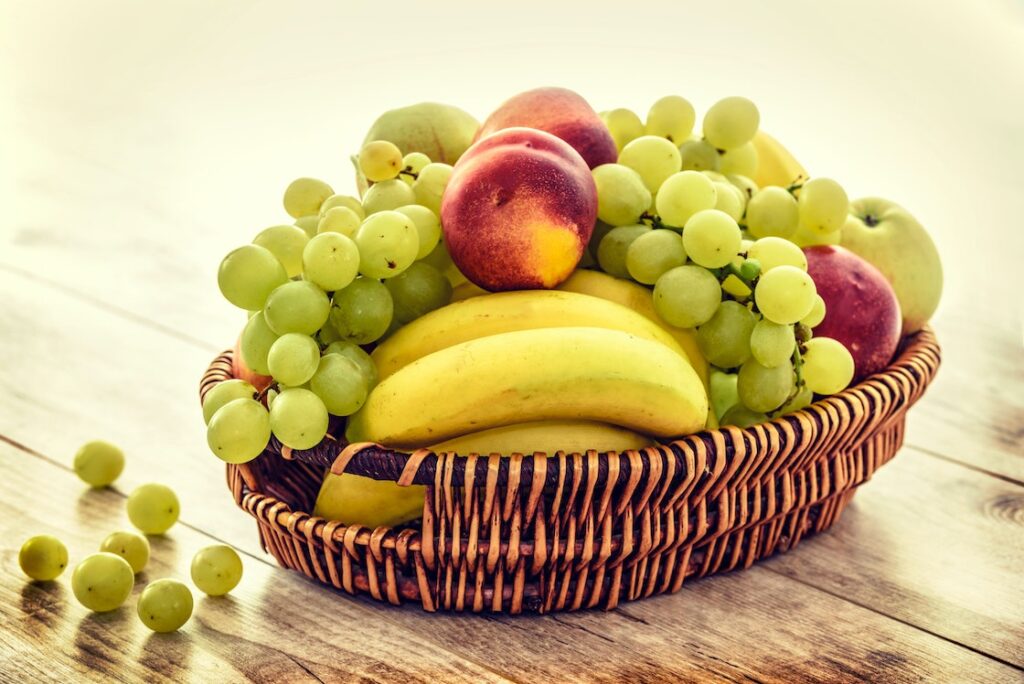Picture this: You’ve bought a batch of strawberries from Trader Joe’s, Ralphs, Vons, or H-E-B, and right when you’re about to pop one in your mouth on a hot summer day, you realize they’re covered in mold.
Most of us have had a similar experience at one time or another, and it never stops being annoying.
If you eat fruit regularly, you’ve probably noticed it tends to mold much faster than most other foods.
However, if you store your fruit properly and take a preventative measure or two, you should be able to stave off mold for quite a while.
That way, you’ll no longer need to rush to eat your produce for fear of it quickly going bad.
Why does fruit develop mold so quickly?
Mold requires moisture, organic material, and warm temperatures to grow and expand. Because most fruit contains quite a bit of moisture, it makes a very attractive surface for mold to invade.
Some specific kinds of fruit, like berries, have a higher moisture content than most fruits with skins or peels, which is why they typically grow mold more quickly than, say, a banana or an orange (both of which also have peels).
When people buy fruit, they’ll often leave it sitting out on the counter. Then, if the temperature reaches the danger zone of around 70 to 90 degrees Fahrenheit, it will only be a matter of time before mold starts to flourish.
Tips to slow mold growth on fruit
1. Don’t buy moldy fruit to begin with
As if finding mold in your fruit wasn’t bad enough, wait until you discover that it may have been there—and visibly so—when you first bought it from your grocery store.
Fruit and vegetables have a long trek of anywhere from several days to two months before they end up on a grocery store’s shelves.
That means that much of the fruit on display in some stores is already showing visible signs of mold growth.
To avoid that, and extend the life of your mold-free fruit, be sure to carefully examine the fruit before you buy it. Flip closed berry trays upside down and take a good look at the underside. Can you see discoloration through the holes in the case? Berries in particular are usually packaged with a colored sheet of plastic at the bottom which incidentally helps hide that mold growth.
Scout around, be nosy, and inspect your fruit for signs of mold and of general age decay. Chances are you’ll prolong the lifespan of your fruit.
2. Give your berries a vinegar bath
There are a couple of things you can do that should, at the very least, buy you some extra time before your fruit gets moldy. One effective option that many people utilize is giving the fruit a vinegar bath immediately after purchasing it.
This method should primarily be used for firm berries, such as strawberries, blueberries, and blackberries. Other berries, like raspberries, are a bit too fragile for the process.
First, you’ll want to throw out any berries in the batch that have visible mold growth. Then, combine three cups of water with one cup of white vinegar, pour the remaining berries into the solution, and swish them around to give them a gentle wash.
Vinegar works as a natural antifungal agent, and this should kill off any invisible mold spores that are lingering on the surface of the fruit. After you’ve given the berries a vinegar bath, drain the solution and rinse them off thoroughly with cold water, then dry them off with paper towels.
Make sure you dry them thoroughly, as leaving too much moisture on the fruit will increase the likelihood of mold growth.
3. Store your fruit differently
The way you store your fruit will have a major impact on how quickly mold shows up.
One method that works well is to place your berries or other fruit in a container that allows ventilation, such as a piece of Tupperware with holes poked in the lid, and line its top and bottom with paper towels.
That way, as the fruit naturally releases its moisture, the condensation will either exit the container or be absorbed by the paper towels, instead of creating a humid environment.
During the spring or summer, you may also want to consider storing your fruit in the fridge, rather than leaving it out on the counter.
The cold temperature will create a hostile environment for mold, and the fruit should stay fresh for significantly longer.
4. Toss the few berries you see mold on right away; clean the rest
There are a couple of other simple things you can do to avoid ending up with a batch full of moldy berries or other fruit. First and foremost, be as discerning as possible when you’re choosing which pieces or packages of fruit to buy at the grocery store.
Carefully examine the fruit and do your best to avoid any that look mushy or old or already have visible mold growth.
Secondly, if you get your fruit home and realize that one or two pieces do contain a bit of mold, throw them out immediately.
The less time the other pieces of fruit spend exposed to the moldy ones, the lower the chances will be of the fungus spreading around.


